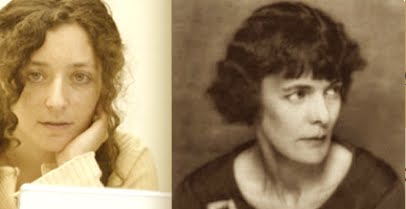Jennifer Scappettone's 'Vase Poppies' and H.D.'s 'Sea Poppies'
LISTEN TO THE SHOW
 For this episode of PoemTalk, we took the show on the road — to Chicago — where David Pavelich hosted us at the Regenstein Library of the University of Chicago, a favorite haunt of an archive-obsessed Al Filreis over many years. (The Modern Poetry collection includes, of course, the papers of Poetry magazine up until 1962 or so, among other gems.) Thanks to David for hosting us! We were joined by Don Share and Judith Goldman, and we talked about two poems, one written through the other: H.D.’s “Sea Poppies” and Jennifer Scappettone’s “Vase Poppies.” Here’s H.D.’s “Sea Poppies” (1916):
For this episode of PoemTalk, we took the show on the road — to Chicago — where David Pavelich hosted us at the Regenstein Library of the University of Chicago, a favorite haunt of an archive-obsessed Al Filreis over many years. (The Modern Poetry collection includes, of course, the papers of Poetry magazine up until 1962 or so, among other gems.) Thanks to David for hosting us! We were joined by Don Share and Judith Goldman, and we talked about two poems, one written through the other: H.D.’s “Sea Poppies” and Jennifer Scappettone’s “Vase Poppies.” Here’s H.D.’s “Sea Poppies” (1916):
Amber husk
fluted with gold,
fruit on the sand
marked with a rich grain,
treasure
spilled near the shrub-pines
to bleach on the boulders:
your stalk has caught root
among wet pebbles
and drift flung by the sea
and grated shells
and split conch-shells.
Beautiful, wide-spread,
fire upon leaf,
what meadow yields
so fragrant a leaf
as your bright leaf?
October 8, 2010
On H.D.'s imagism
A 27-minute introductory discussion
Here is a new 27-minute introductory discussion of H.D.’s imagism — with Dee Morris, Julia Bloch, and Annette Debo: MP3.